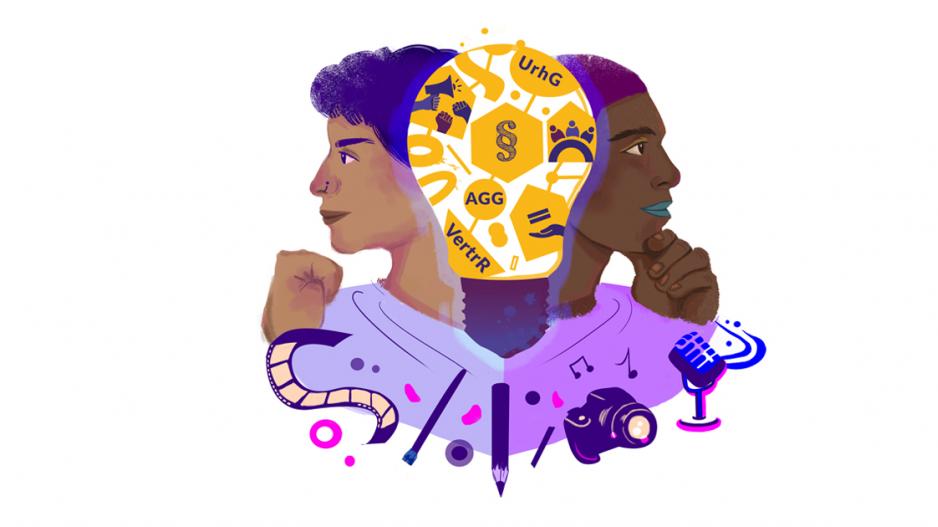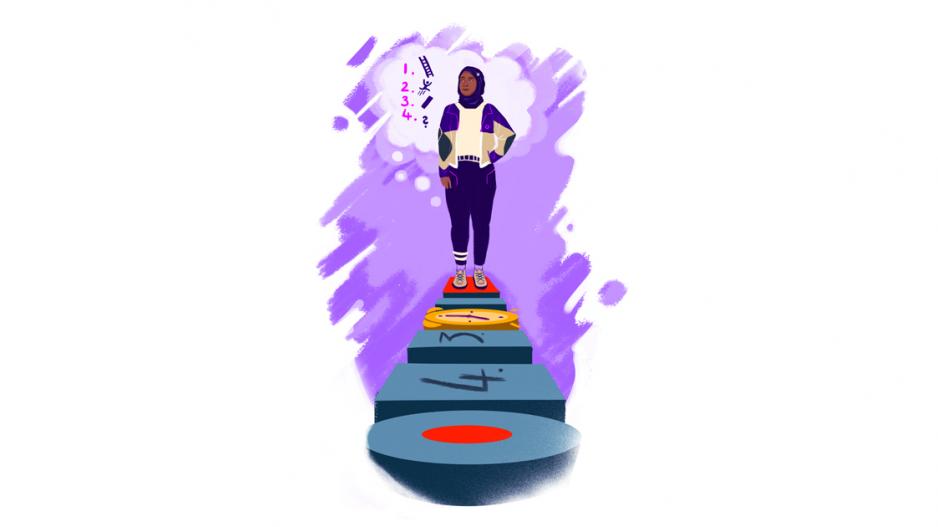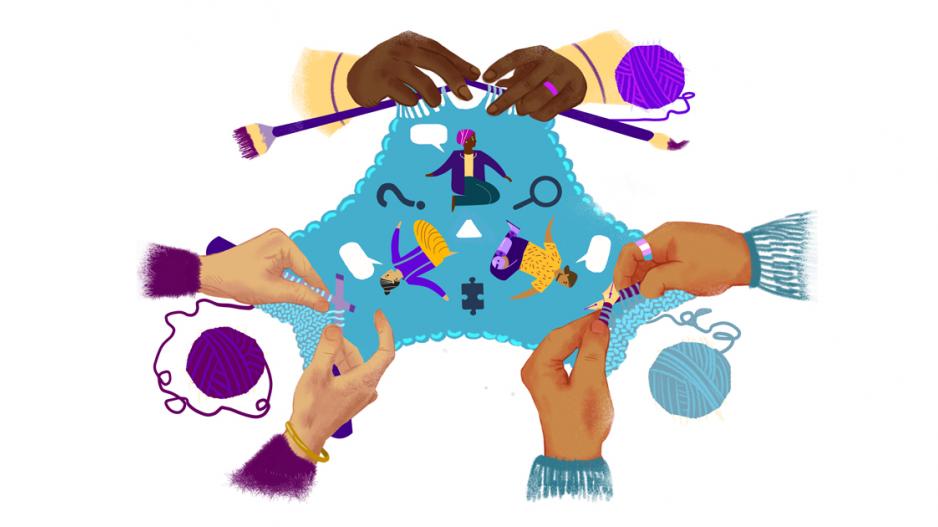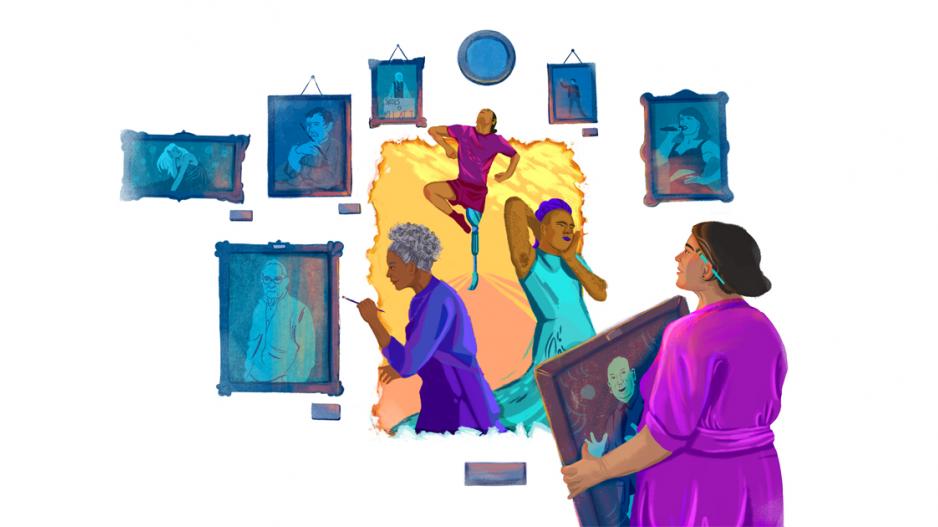Empowerment Compass
Navigating Discrimination in the Cultural Industry
Translation by: Kathy-Ann Tan

1. Structural Knowledge
Best Practice: Writing Grant Applications
One can learn how to write successful grant applications. Do you know someone whose project has been funded? Exchange information about who is funding the project and ask if you can read their project grant application.
Feedback from Funding Bodies
Your grant application was not successful. But why? The content itself is not always a decisive criterion. Sometimes formal errors or the application situation decide whether a project proposal is eligible for funding. Funding bodies must make their decision transparent when you ask them for feedback. This information can help you with your next grant application.
“What else is out there?”
Which funding programs are of interest if you are planning an art project that deals with questions of decolonial aesthetics? How can you finance the necessary research if you want to build on marginalized art practices? Get an overview of the funding landscape. There are funding sources for specific and interdisciplinary fields as well as state, federal and EU funds. The Culture Funding Point (Kulturförderpunkt) Berlin offers a first point of orientation.
Make Use of Sector-Specific Consultation
Many sectors have lobby groups that can address needs and demands to politicians. At the same time, these groups frequently offer advice on sector-specific funding and orientation in the Berlin cultural landscape.
Know Your Rights: Contract Law
What rights do you have as the author of a creative work? How are rights of use remunerated? What do you need to consider when drafting contracts? How can you, as a freelance artist, protect yourself contractually against discrimination? Use the information offered by consultation centers and professional associations to find out about your rights.
Know Your Rights: Anti-Discrimination
For employees, there are various contact points that can provide advice and support, such as the Staff Council (Personalrat) and Equal Opportunities Officer (Gleichstellungsbeauftragte). According to the General Act on Equal Treatment (AGG), the employer is obliged to ensure the equal treatment of all employees within the company. In order to protect freelance artists against racism in the context of a contractual relationship, the law firm Laaser has developed the Anti-Racism Clause (Anti-Rassismus-Klausel). Regardless of the workplace, there are various anti-discrimination centers in Berlin, such as ADNB, Gladt e.V. and LesMigraS. For those working in the film and theater industry, there is also Themis, the confidential counseling center against sexual harassment and abuse.

2. Scope of Action & Boundaries
No Money, however...
Money is not the only resource you need to realize an artistic project. What are your resources and what can you do with them (e.g. time, unusual ideas, special knowledge or being good at networking, organizing and supporting)? Also ask others what they think you are good at. Maybe you can exchange resources with other artists whom you trust.
Be in Solidarity with Others
In order to make the cultural industry more solidary, it is important to think about how you can support others. With whom would you like to share your knowledge? With whom do you want to show solidarity?
Recharging Energy
Write down activities that are good for you. Make sure to write down things that don't take up much time or that are easy to organize. If you feel stressed, overworked or burnt out, do something for yourself from your "self-care list".
Perceive Stop Signs
Which signals tell you that you have reached your boundaries? Sharpen your awareness of this and communicate your boundaries to people you work with. If it’s not easy for you to say "stop", practice setting your boundaries first in environments in which you feel comfortable and in less conflictual situations.

3. Setting Goals
Visualize Visions
Do you have a vision? How do you imagine your next artistic project? By putting your project into words or drawing it to visualize it, you are making it tangible: Where are the inconsistencies or challenges? What is still missing? Visualization methods such as a vision board or a timeline will help you to relate different ideas to one another and not to lose track.
Best Case/ Worst Case Scenario
Assuming your project is running optimally: How would you notice that? Or, if it is not going so well: What would you like to achieve? Thinking down the line: Everything is going great. Where will you be in 1/ 2/ 3 years? By creating scenarios, you are concretizing your project and the various possible methods of its implementation.
Developing Strategies
There are always multiple ways to implement an idea. If you have reached a dead end, look around for alternatives. Sometimes it makes sense to retrace your steps and try a new path.
Step by Step: From Vision to Practice
Small-scale planning helps when your resources are scarce or if you don't know where to start in order to achieve your goal. What are your next steps? What do you need in order to get there? If you only have half an hour each day, what can you accomplish in this half an hour?

4. Networks
Feedback, please!
Are your artworks being reviewed? Do critics understand your references? If not, obtain feedback in the form of constructive criticism from other marginalized artists so that you have the chance to develop yourself artistically.
Mapping of Actors
Who actually works in your field? Which other artists, cultural workers or activists inspire you? Which related fields do you find interesting? Whom could you ask for advice? Which forums for exchange or networking spaces (online and offline) do you know of?
Give Recognition & Form Groups
Networking and exchange are based on mutuality and respect. Think about how you can make reference points to other artists visible in your work. Challenge competitive mechanisms in the cultural industry and think about what you can contribute in a team.
Look for a Mentor & Become a Mentor Yourself
You don’t have to reinvent the wheel. Whom do you know who is further ahead than you? Which stations have they passed? What strategies have they used? How can you keep the door open and help others take a step forward?

5. Putting in the Center
Address the Margin
For whom do you make your art? What would it look like if you didn't have to explain anything? What kind of art would you make if the social conditions were different? How can you make your art accessible to your community and to other marginalized communities?
Look for Traces & Create References
Which marginalized artists or social / artistic movements have existed before you? What can you learn from them? What do you like about their art? How can you relate to them?
The Living Archive
Document your strategies, your networking and special events! It's good to see what kinds of cooperation and continuity there are, for yourself and for others who work as your contemporaries or who come after you.

